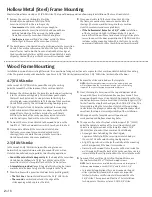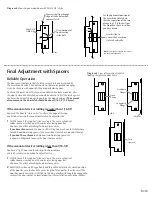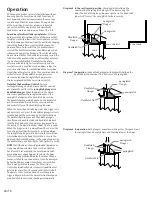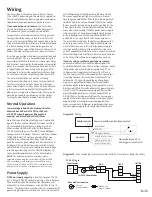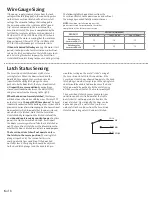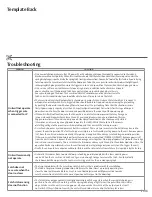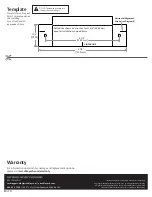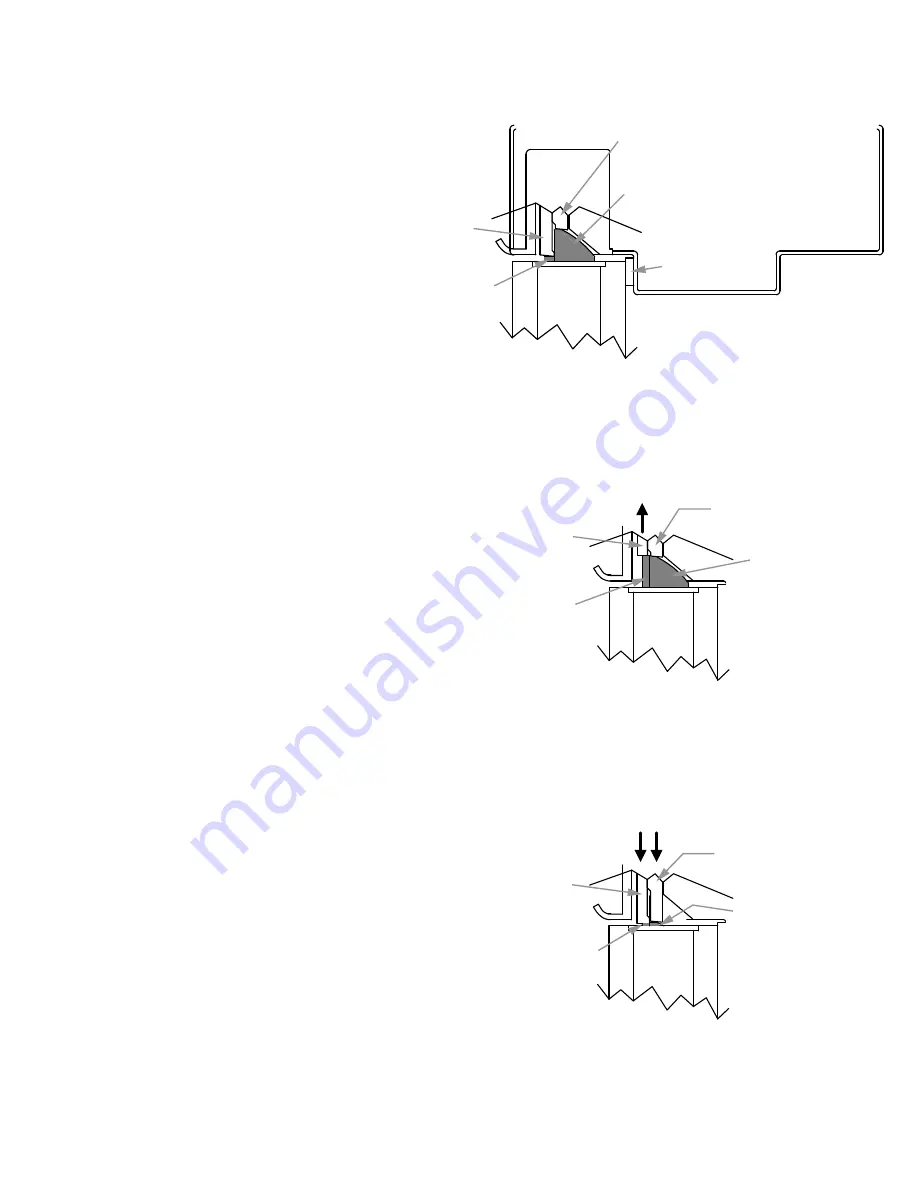
4
of 8
Springlatch
Springlatch
Plunger
DOOR FRAME
DOOR STOP
DOOR
Deadlatch
Plunger
Deadlatch Pin
Deadlatch
Plunger
Springlatch
Plunger
Springlatch
Deadlatch Pin
Deadlatch
Plunger
Springlatch
Plunger
Springlatch
Deadlatch Pin
Operation
While you can make a successful installation without
knowing how the Securitron UnLatch functions, it’s
best if you understand its operation in the event you
run into any difficulties or questions. The operation
of the Securitron UnLatch is, of course, intimately
connected with the way latches and specifically
deadlatches work on a door so we’ll cover this first.
An ordinary latch is called a springlatch
and it’s used
on low security interior doors. One of the reasons that
this latch’s security is low is that an intruder can retract
the latch and open the door from the outside by slipping
something flexible like a credit card in between the
door and frame. To forestall this, the deadlatch was
created. The deadlatch includes a deadlatch pin which
is depressed against the flat part of the strike when the
door is closed. When the deadlatch pin is depressed, the
latch cannot be pushed in (by a credit card for instance);
it is mechanically blocked. Deadlatches therefore
offer a considerably higher level of security and this
level of security is usually desired on doors subject to
electric control from the installation of the Securitron
UnLatch or other electric strike. The Securitron UnLatch
makes full use of the deadlatch pin and preserves
its security function. Springlatches however can
also be employed with the Securitron UnLatch.
Note that the Securitron UnLatch
has two
rectangular plungers which move under the control
of a motor. We call these the s
pringlatch plunger
and
deadlatch
plunger
. When the door is in the closed
and secure position, the springlatch pushes in the
springlatch plunger and the deadlatch pin rests on
the deadlatch plunger which pushes in the deadlatch
pin. This maintains the latch in the secure position
and makes full use of the deadlatching function.
When the Securitron UnLatch operates (the trigger wire
connects to the +V wire), the deadlatch plunger retracts
into the body of the Securitron UnLatch which allows
the deadlatch pin to move out. Then both plungers
simultaneously push the latch and deadlatch pin back
into the latch body and the door may be opened from
the outside. This operation takes about 1/3 of a second.
When the trigger wire is removed from the +V wire, the
Securitron UnLatch will return to its initial condition:
the springlatch plunger will retract into the Securitron
UnLatch body which allows the latch to re-secure the
door and the deadlatch plunger will push out depressing
the deadlatch pin and freezing the latch for best security.
NOTE
that if the door is heavily preloaded (by someone
trying to pull it open before the Securitron UnLatch
has released it for example), the Securitron UnLatch
may not possess enough power to release the door.
This is termed a stall condition for the motor. When a
motor is stalled for a period of time, it can be damaged
by heat build up as motors draw heavy current when
they’re not permitted to move. The Securitron
UnLatch automatically detects any stall condition that
persists for more than 1.5 seconds and shuts itself off.
To operate, the Securitron UnLatch must simply be
triggered again (which is the normal action for anyone
who has failed to enter) and it will operate normally.
Diagram 6
In the rest (secure) position,
the springlatch is allowed to
come out by the springlatch plunger thereby securing the
door. The dead latch plunger however pushes in the dead latch
pin which “freezes” the springlatch for best security.
Diagram 7
In operation
, the dead latch plunger withdraws which allows the
dead latch pin to come out. This “unfreezes” the springlatch.
Diagram 8
In operation
, both plungers move forward together. This pushes out
the springlatch and deadlatch pin and thereby releases the door.


